Family Tree of Gaia and Satan Family Tree of Gaia and Kronos
Few figures from aboriginal mythology are as popular and well-known today as the Greek gods. You tin can detect them in books and movies, company names and Halloween costumes, and even in space, where tons of astrological features are named after them! Simply what if you want to know more most the Greek goddesses and gods than just their names and a vague idea of their role? In this article we'll provide a comprehensive guide to the Greek pantheon, starting with an introduction to the Greek gods and their mythic origins. Then, nosotros'll do a deep dive on the Twelve Olympians, go over some other important minor deities, talk over Greek gods family tree, the history of their worship, and wrap upwards with all the places yous might encounter this ancient pantheon today! Every bit in many aboriginal religions, there were hundreds of beings recognized as deities by the Greeks. These deities were more often than not associated with abstract concepts like memory and justice and natural forces and features like rivers, seasons, expiry, and rebirth. There were as well gods associated with agronomics and craftsmanship (like shepherding and blacksmithing) and the social order (i.e. spousal relationship, the constabulary). These gods were understood primarily as inexorable forces that governed human beingness, just they also had a human aspect. These gods likewise marry, have children, fight, intermingle with mortals, insult each other, take vengeance, make state of war, and create peachy art. They have hierarchical and familial relationships. Mythology shows the gods both hurting and harming both mortals and each other in adequately equal measure, and not necessarily in accord with modern conception of justice or fairness. To the modern observer, aboriginal religions can seem truly baroque. The gods seem petty and irrational—not benevolent or better than humans, just embodying the unabridged spectrum of human strengths and foibles while simultaneously ignoring human conventions (the Greek gods' family tree is incredibly complicated—and incestuous). But to the Greeks, the gods were non meant to bear meliorate than humans or gauge man behave; they were but the absolute forces that ordered the universe and drove all phenomena. Their human aspects but fabricated them intelligible. Mount Olympus, the mythic home of the Greek gods. Photo by flickr user stefg74. In the Greek view, the master gods of Olympus were far from the original gods of the Universe. In the start was only Chaos. From Anarchy came four beings: #1: Eros, who represented not only love but the power to reproduce Gaia birthed Uranus, the sky, from herself. Gaia and Uranus and then had many children together, who were known as the Titans. Among the Titans were both gods and monsters. Uranus was not pleased with Gaia'due south monstrous children, and so attempted to force them back into her womb, causing her incredible pain. Because of this, Gaia had her youngest son, the Titan Kronos, desexualize his father with a sickle and cast the testicles into the sea. Kronos then became ruler of the gods. He took his sister Rhea as consort. But as he had overthrown his own father, he feared his children would overthrow him. And so he consumed each of his children equally they were born. Withal, with her final child, Zeus, Rhea tricked Kronos by offer him a rock wrapped in swaddling instead. She hid Zeus on world, where he was raised past a nymph. When he grew to manhood, Gaia helped Zeus drug Kronos and and then requite him a potion to brand him throw up all of his siblings: Poseidon, Hades, Demeter, Hera, and Hestia. With his siblings as allies, he established himself at Mount Olympus and led a war against Kronos and the other Titans. With his victory, he became king of the greek gods and goddesses. He imprisoned the defeated Titan men in the depths of Tartarus. However, he immune the Titan women to remain above and in fact went on to have children with many of them! He besides married Hera and made her his consort. To the Greeks, Rhea, Cronus, and the Titans most likely represented the gods who were worshiped before the worship of the main Olympians were established. The Boxing Betwixt the Gods and the Titans, by Joachim Wtewael, 1600 The number twelve had great symbolic significance to the Greeks, then there always had to exist twelve primary Olympians. This is regardless of the fact that far more than twelve gods lived at Olympus, and some of the Twelve barely resided there if at all (similar Poseidon and Hades). Myth holds that Hestia forfeited her place equally one of the Twelve when Dionysus ascended Olympus, to go along the right number. Who was amongst the Twelve was not e'er consistent, either—some descriptions kept Hestia and left out Hades, for instance. Nevertheless, the post-obit Greek goddesses and gods were those most commonly named as the Twelve. Illustration of Zeus by Paul Bransom, circa 1921 God of: Storms, fate and destiny, law and club, kingship; king of the gods. Origin: Child of Titans Kronos and Rhea Commonly Depicted As: A stiff, mature, kingly man with a dark beard. Symbols and Icons: Thunderbolt, eagle, oak, bull After Zeus threw down Kronos, he, Poseidon, and Hades drew lots to divide up the creation. Zeus got the sky. The earth was considered every bit under the mastery of all three brothers. Zeus' chief original attribute was as a weather condition god; thunderbolts forged past Hephaestus were his chosen weapon. After, he came to symbolize guild, the police force, and fate; he was considered more than powerful than all the other gods and thus his dominion went unchallenged. He had a huge number of affairs with both goddesses and mortal women, and the many children resulting from said affairs. He often took animate being class to seduce mortal women. Other than the story of him overthrowing the Titans, most of the best-known myths of Zeus today heart effectually his seduction (or rape) of various women. Hither are some notable ones: Leda: Leda was the married woman of Tyndareus, the Queen of Sparta. Nonetheless, Zeus desired her, so he transformed into a swan and either seduced or raped her, depending on the version of the story. Leda also slept with her husband the aforementioned nighttime, and and then laid two eggs. From one egg came her children with Zeus, Helen (of Troy fame) and Polydeuces (or Pollux). From the other egg came her children with Tyndareus, Castor and Clytemnestra. Europa: Zeus saw and desired the beautiful Europa, a Phoenician noblewoman. He disguised himself as a white bull in her father'southward herds. When out with her handmaids, she admired the beautiful bull and climbed atop his dorsum. He seized the opportunity to take her away, swimming across the ocean to Crete. Later Zeus had several children with her, she married the rex of Crete. The name of the continent "Europe" comes from Europa. Danae: Danae was the daughter of a king. This king heard a prophecy that her son would overthrow him, so he locked Danae in a belfry so no man could impact her. Withal, Zeus transformed into a shower of gilt, came in through the grates of her tower, and impregnated her with Perseus. The king threw Danae and Perseus into the bounding main in a wooden chest. Zeus asked Poseidon to conduct them to safe. The Peacock Complains to Juno; Gustave Moreau, 1881 Goddess of: Marriage and childbirth, women, and the heaven and stars; queen of the gods Origin: Child of Titans Kronos and Rhea Unremarkably Depicted Equally: A beautiful, majestic matron wearing a crown Symbols and Icons: The peacock, the cuckoo, the pomegranate, the moo-cow As married woman of Zeus, she was queen of the Greek gods. She was undeniably powerful in her own right, just was non really considered Zeus' equal; in myths about direct confrontations between them Zeus e'er emerged the victor. She was considered somewhat stubborn and quarrelsome; she and Zeus had a tumultuous human relationship. She was known for tormenting Zeus' many lovers and then had a reputation for being "jealous." Every year, she renewed her virginity by bathing in a spring at Nauplia. Many of Hera's appearances in myth revolve effectually her attempts to torment the lovers of Zeus and the children resulting from these unions. Heracles and the Milky way: Hera repeatedly tormented Zeus' child with the mortal Alcmene, Heracles. (Zeus' try to placate Hera past naming the child in her honor was non successful.) She set many obstacles against him throughout his life. One notable story about Hera and Heracles was that when he was an baby, Zeus tricked Hera into breastfeeding Heracles, presenting him simply as an abandoned child. When she realized who he was, she yanked the baby from her breast, and the spray of milk that followed became the Milky Way. Lamia: Zeus took a beautiful queen of Libya every bit his mistress, and she bore him multiple children. Enraged, Hera killed Lamia's children and turned her into a monster (typically office-serpent) who devours the children of others. Cirta mosaic of Poseidon and Amphitrite, circa 315-325 God of: The sea, flood, drought, earthquakes, horses Origin: Child of Titans Kronos and Rhea Usually Depicted As: A mature, dark-bearded man with a trident Symbols and Icons: The trident, the equus caballus, the dolphin, the balderdash, the tuna When Zeus, Poseidon, and Hades defeated their father Kronos, they drew lots on who would rule over what, and Poseidon drew the sea. He is thought to be much like the ocean: capable of being both majestic, at-home, and stormy by turns. Like his blood brother, Zeus, he was known to have many lovers. He was considered to take the power to give sailors safety passage. He is often credited with creating the horse; he rode around on the surface of the sea in a chariot pulled by magic horses. The Greeks believed that sacrificing a horse would win Poseidon'southward favor. Patronage of Athens: Poseidon and Athena were both in biting contest to get the patron god of Athens when information technology was a newly-founded city (and before it was chosen Athens, of course). Athena proposed they hold a content for the patronage of the city: each would present a souvenir to the city and the king, Cecrops, would judge which present was all-time and therefore which god would be patron. Some versions of the myth take Poseidon giving the people a spring, which turned out to be saltwater so useless. Some versions take him creating and gifting the city with the horse. Either mode, Athena gave the urban center the olive tree, which Cecrops deemed the better souvenir. Athena became patron and the urban center was chosen Athens in her award. Fresco of Demeter by Cosimo Tura, 1476-1484 Goddess of: All plants and fruit, agriculture, grain, staff of life, fertility, and newlyweds. Origin: Child of Titans Kronos and Rhea Ordinarily Depicted Every bit: A crowned, blonde, somewhat voluptuous, mature woman bearing grain. Oftentimes portrayed with her girl, Persephone, or in a chariot drawn by horses or dragons Symbols and Icons: Corn, pigs, fruit, poppies, sheaves of wheat, the cornucopia/horn of plenty. The proper noun "Demeter" has two potential derivations; it could hateful either "mother earth," or "giver of grain/barley." She was primarily a Greek goddess not only of nature but of cultivation; she taught humanity how to cultivate grain. Equally such she was also considered the giver of bread. Without her approval, goose egg grew and people starved. Rather than dwell in Olympus, she spent most of her time wandering the surface of the world with her daughter, Persephone. Mother and daughter were oft worshiped together, particularly as office of the Eleusinian mysteries. This was a mystery cult centered at Eleusis that promised initiates entrance into the blessed paradise Elysium in the afterlife. The contents of the mysteries were closely-guarded secrets. We have a general thought that they were primarily a ritualized presentation of the myth of Persephone, just we don't know all the specifics. So many details of the mysteries remain a mystery to this day! Many agrarian festivals were held in her honour throughout Greece. Demeter was also a goddess of fertility, and the priestess of Demeter was responsible for explaining the duties of union to newlywed couples. The most important myth about Demeter is the myth of the abduction of Persephone—a story that has endured in the popular imagination through the present solar day. The Abduction of Persephone: The god Hades wished to marry Persephone, merely he knew that information technology was unlikely that Demeter would allow anyone to marry her daughter every bit it would split up the two. So he petitioned Zeus, who gave him permission to abduct Persephone. When Persephone was gathering flowers with her companions, he came along from the world, snatched her up onto his chariot, and descended downwardly with his new helpmate into the Underworld. Demeter, distraught, searched everywhere for her daughter with the aid of the goddess Hecate. But she couldn't find Persephone anywhere on earth. In her grief, she made it then all crops failed and all vegetation withered. Eventually, the Greek god Helios told her he had seen Hades carry off Persephone. Outraged, Demeter went to Zeus to demand her girl be returned. Zeus complied because humanity was starving, and commanded Hades to return Persephone to the surface world. Hades did return her. But earlier that he offered Persephone a unmarried pomegranate seed to eat. Considering she had eaten of the fruit of the Underworld, she had to return there part of every year. Thus she spends a tertiary of every year (or half, depending on who is telling the tale) in the Underworld, and the rest of the twelvemonth on the earth's surface with her female parent. This myth is used to explain the cycling of the seasons: when Persephone is higher up ground, Demeter is happy and things grow. When Persephone is in the Underworld, Demeter is sad and the earth is arid (so, winter). 16th-century painting of Hades God of: King of the Underworld, god of death and funerals; also considered the god of the metals and riches of the world and soil Origin: Child of Titans Kronos and Rhea Usually Depicted As: A dark-bearded, mature man; had two unremarkably depicted aspects: enthroned in the underworld, or pouring earthly riches from a cornucopia Symbols and Icons: Black sheep, republic of cyprus, narcissus His proper name has ii possible derivations: one significant "he who makes invisible," and some other meaning "receiver/embracer of all." He became god of the underworld when he, Poseidon, and Zeus drew lots to see who would command which realms of the creation. Yet, he was immune to ascend Olympus at volition, although he did not know what transpired on globe or on Olympus when he was in the underworld. He presided over the trials of the dead. He was considered a chthonic deity—associated with the globe and clandestine equally opposed to the sky or ocean. The Greeks considered him somewhat pitiless and he was not well-loved; unsurprising for the god of decease! He was as well oft referred to euphemistically, with names similar "Clymenus" (the illustrious) and "Eubelus" (the giver of expert counsel) due to Greek superstition. He was too known as "the hidden one" because he had a helmet that made him invisible. Like Poseidon and Zeus, he had several extramarital dalliances; although of an order of magnitude less, it seems. By far the most notable myth almost Hades is his abduction of Persephone; encounter Demeter'southward section higher up for this myth. Athena by Gustav Klimt, 1898 Goddess of: wisdom and reason, battle strategy/warfare, handicrafts, weaving. Patron goddess of Athens. Origin: Was the child of Zeus and Titan Metis. Fearing his kid would usurp him, Zeus consumed the pregnant Metis. Later on, he endured a "splitting" headache—until Hephaestus split open Zeus' head with an axe and the fully-formed, armor-wearing Athena emerged. Unremarkably Depicted As: Wearing body armor with a shield and a lance; or wearing a helmet and the aegis, her cape printed with the face of Medusa. Symbols and Icons: The owl, the olive tree, the goose, the serpent She represents logic and rationality to such an extent that she cannot exist "afflicted past Aphrodite"—she cannot fall in love. As such, she is a sworn virgin. She is besides considered to accept a somewhat androgynous aspect. She has a close relationship with Zeus and was thought to sit at his right manus and requite her wise counsel when occasion required. As opposed to beingness aligned with natural forces, Athena is primarily a goddess of civilization. She was considered a strength of ability and wisdom who protected the police force, the state, and social institutions. In many ways she is the opposite of her fellow sworn virgin goddess Artemis. As protector of the land, she likewise had an attribute as a goddess of warfare and battle; she was considered the goddess of military strategy. This stands in dissimilarity to Ares, who was the god of thoughtless battle-lust. The Greeks took it as somewhat self-evident that Athena surpassed Ares in battle. She was considered, much like Hephaestus, a great innovator and creator of many of the useful crafts used past humankind. Pretty much whatsoever carefully-designed invention or craft commonly used for human manufacture was idea to be inspired or created past Athena. She was notably considered the inventor of weaving. She besides created the olive tree. Athena was a particularly beloved goddess by the Greeks; she had many cult sites and they oft sacrificed bulls to her. We've already covered how Athena became patron goddess of Athens in the Poseidon section, but in that location are also other notable myths about her. Arachne: Arachne was a young Greek adult female who claimed that she was a ameliorate weaver than Athena herself. Insulted, Athena challenged Arachne to a weaving contest. Athena wove scenes of the gods' glories and triumphs, while Arachne wove scenes of the gods abusing mortals. There is some variation in exactly what happened—some versions claim that Arachne's weaving was superior, and some that Athena won. Notwithstanding, Athena was enraged by Arachne's insult to the gods through her woven scenes and turned her into a spider, weaving only webs. Bonus: Want to read more well-nigh spiders? Check out our articles on myths of the camel spider and why you shouldn't fear garden spiders. 1497 painting of Hephaestus by Andrea Mantegna God of: Craftsmen, blacksmiths, burn, volcanoes Origin: Typically considered a child of Hera and Hera lone. She conceived him herself, only when he was born crippled, she threw him out of the heavens. He was rescued and raised by Thetis and Eurynome. He was later welcomed back to Olympus afterward proving his skill equally a craftsman. Depicted Every bit: A middle-anile, disguised man with the tongs and hammer of a blacksmith, ordinarily wearing a short-sleeved tunic and cap; sometimes riding a donkey. Sometimes visibly crippled; sometimes ugly, especially in post-ancient depictions. Symbols and Icons: Hammer, anvil/tongs, axe Hephaestus is notable for being the only primary Greek god of Olympus with a inability. Aphrodite was not happy to be married to him and engaged in an ongoing thing with Ares. Hephaestus was the craftsman of the gods and fabricated many of their most prized possessions, for example: Hephaestus taught man the crafts associated with smithing and every bit such was oftentimes worshiped in tandem with Athena, who was as well associated with crafting. He was also known for his healing abilities; his priests were renowned for their knowledge of healing snake bites. Equally Hephaestus was oftentimes ridiculed and mistreated for his lameness, many of his myths are almost shaming those who cantankerous and denigrate him—even the other gods. Aphrodite and Ares: Aphrodite was married to Hephaestus, but they did not have a happy wedlock. She had an ongoing matter with Ares, god of war. Helios, the Greek sun god, revealed the affair to Hephaestus when he saw the lovers cavorting together from his chariot in a higher place. Enraged, Hephaestus decided to lay a trap. He hung a fine-woven, invisible net in a higher place their trysting-place and told his wife he would be gone for some time. When Ares and Aphrodite were in flagrante delicto, the net dropped, trapping them in an amorous embrace. Hephaestus invited the gods to come view his unfaithful wife and her lover. The goddesses declined, only the men went to meet. Hephaestus demanded back the bride-gifts he had paid for Aphrodite, but Zeus refused and told him they needed to work out the marital fashion themselves. Ares was ordered to pay a fine to Hephaestus. None of this, of course, fabricated Aphrodite faithful to Hephaestus. "The Birth of Venus" by Giorgio Vasari, 1556-1558 Goddess of: Dear, passion, beauty, sex Origin: When Uranus was castrated by Kronos, his testicles were bandage into the sea. Aphrodite rose from the foam that formed around the testicles. Depicted As: A beautiful, nude woman; or in a clothed, seated style similar to other Olympian goddesses Symbols and Icons: Apple, myrtle wreath, scallop shell, the dove, the swan, the rose, the pomegranate "Aphros" means foam; while Aphrodite's master aspects were related to love and sex, she was also a goddess of the sea. She rescued shipwrecked sailors. She also guarded plants, and was (somewhat unsurprisingly) the goddess of prostitutes. In some regions she was also a Greek goddess of war and considered the lawful married woman of Ares; her connection to war perhaps explains the coupling of Ares and Aphrodite throughout myth. She had a magic girdle made my Hephaestus that made the woman who wore information technology irresistible; she would loan information technology to Hera when Hera wished to recapture the attention of Zeus' wandering heart! Unlike most of the other female gods, who tended to have a adequately express number of lovers, Aphrodite was known for her many mortal and immortal lovers. She was known for her jealous nature; while she was very generous to her worshipers, she was spiteful to those who denied her. Aphrodite myths typically business organization her dear affairs. Her liaison with Ares and the trap laid by Hephaestus was already described. Other than Ares, her most famous lover was Adonis. Aphrodite and Adonis: Adonis' parentage is not consistent in myth, simply in all accounts his pregnant mother was turned into a myrrh tree and he was built-in from the tree some time later. Aphrodite was taken with the baby and gave him into the care of Persephone. However, Persephone refused to give the kid back. To solve the dispute, Zeus (or sometimes Calliope) decreed that Adonis would spend iv months of the twelvemonth with each goddess and the remaining four months nevertheless he chose. He decided to spend eight months of the twelvemonth with Aphrodite. (Information technology is unclear at exactly what point in the story Adonis becomes a boyfriend and the lover of Aphrodite, just that is how he is typically depicted.) Unfortunately, Adonis is gored to death by a wild boar. In unlike versions of the myth, the boar is sent by a different god or goddess to take retribution against Aphrodite for some perceived wrongdoing. One of the most famous versions has her immortal lover Ares sending the boar to kill Adonis out of jealousy. Aphrodite hears Adonis' cries and rushes to his side, where he dies in her arms. She turns his claret into the anemone flower. Adonis was actually a cult figure in ancient Hellenic republic and the subject area of many mystery cults concerned with the Underworld, resurrection, and immortality. He and Aphrodite were sometimes worshiped in tandem as function of these cults. Mars past Has Thoma, 19th century God of: war and battle (particularly bloodlust), but too associated with courage and civil order Origin: Child of Zeus and Hera Depicted As: Either as a mature armored warrior or a nude youth, but almost always with his helmet. Symbols and Icons: Spear, woodpecker, vulture, domestic dog, peaked warrior'southward helmet While Athena represented battle strategy and cunning, Ares represented bloodlust and battle frenzy—he enjoyed conflict for its ain sake and was known to assistance both sides by turns in the battles of men. In addition to battle and bloodshed, he was also said to cause plagues and epidemics. Every bit an amanuensis of violence and chaos, he was non well-loved by his parents or the other gods (except for past Aphrodite). Like most of the other male gods, he had many lovers, but Aphrodite was the almost notable one. Because he was an agent of violence and chaos, he was not necessarily hugely popular across Hellenic republic. He was worshiped primarily in the northern parts. Additionally, the Spartans believed they were descended from him, and at a certain betoken in Spartan history he received human and dog sacrifices. He wore a gold helmet and bronze armor made past Hephaestus. Some Ares myths accept already been mentioned; he was humiliated by Hephaestus for his affair with Aphrodite, and he killed Adonis because he was jealous of Aphrodite'southward love for him. But here's 1 other: The Areopagus: The site where criminal trials were held was named after Ares because he was, in myth, the showtime being tried there. One day he came upon a son of Poseidon trying to rape his daughter, Alcippe. To protect her, he killed her attacker. Poseidon was furious and demanded justice for the death of his sons. A trial was held and twelve gods acquitted Ares, saying his violence was justified. Diana la Casadora, Pedro Lira, 19th century Goddess of: Nature, wild creatures, hunting and archery, virgins, childbirth, and witches Origin: She was a child of Zeus and Leto, delivered on the island of Delos because that was the simply place that would offering Leto sanctuary from Hera's wrath. Usually Depicted Every bit: A daughter or immature woman with a bow and arrow, unremarkably with a stag or hunting dog Symbols and Icons: Deer, cyprus, the moon, bear, palm tree Her proper noun is typically idea to mean "healthy" or "vigorous." Artemis is primarily a nature goddess and was ofttimes identified with local nature goddesses in her worship. As a immature girl, she begged her father to be able to remain a virgin forever; he granted her wish. Priests and priestesses of Artemis took vows of chastity. Artemis protects women and wild fauna, especially the young. She was a goddess of the natural world. In spite of her status as a virgin goddess she was as well associated with childbirth. Hunting with her argent bow, she wanders the woods with her companions, who are generally female. Some of her notable companions include the Pleiades, the seven sisters. However, several of the Pleiades did not remain virgins and ended up having children, like Maia, who bore Hermes to Zeus. She was considered responsible for the sudden deaths of girls and women, but could also protect, cure, and heal these things. Her twin blood brother Apollo was in many ways her analogue; they had a close and complementary relationship. Some traditions placed them as husband and wife, but this is non the most mutual interpretation. The most famous myth about Artemis is the myth of Actaeon. Actaeon and Artemis: The young hunter Actaeon came upon Artemis bathing naked in a woodland spring. He was so struck past Artemis' beauty that he remained to watch and was discovered by the goddess. As punishment for his transgression, she turned him into a stag, and he was hunted down and ripped to pieces by his own hunting dogs. Rosalba Carriera, Apollo, 18th century God of: Prophecy, the sun, music, verse, the arts, archery, healing Origin: Child of Zeus and Leto; built-in on Delos Usually Depicted Equally: A beardless, cute youth (naked or robed), often holding a lyre Symbols and Icons: The lyre; eagles, snakes, crows, cicadas, wolves, dolphins, ravens, the laurel tree, the number 7 Major Relationships Apollo was 1 of the most widely worshiped and beloved Greek gods of Olympus. Like many of the gods, Apollo had a somewhat dualistic aspect; he was both the patron of the about civilized arts, similar music and poetry, and capable of extremely fierce and barbarian acts. Apollo was a close counterpart to his sister, Artemis. While she was a goddess of wild nature, he was much more than closely associated with civilization; she was connected with the moon and he with the sun; while she was thought to exist responsible for the sudden deaths of women and girls, his arrows caused the sudden death of men and boys. Artemis had a silver bow, and he had a wooden ane. Both gods also had a healing attribute. Every bit a god of civilization, Apollo protects flocks and cattle and the founding of towns. Additionally, Apollo was a god of prophecy; one of the most famous oracles in Greece, the oracle at Delphi, was dedicated to him. And of course, like many of the gods, he was known for his many lovers, male and female—although he was not very lucky in beloved, with many of his pursuits and affairs having tragic ends. Many of the myths of Apollo center around his unfortunate pursuits of women and men. Daphne: Apollo loved the beautiful Daphne, who had sworn to remain a virgin. He chased her until she could run no more than. She cried out to her grandfather, river god Peneus, for assist. He turned her into a laurel tree so that Apollo could non affect her and she could remain forever a virgin. Cassandra: Apollo gave Cassandra, a princess of Troy, the gift of prophecy in an effort to win her angel. When she rejected his advances, he cursed her that no one would ever believe her prophecies. Hyacinthus: The beautiful swain Hyacinthus was 1 of the lovers of the god Apollo. However, the due west wind, Zephyr, likewise loved Hyacinthus and was jealous. And then i day when Apollo and Hyacinthus were taking turns throwing the discus, Zephyr blew Apollo's discus off-grade, causing information technology to strike and kill Hyacinthus. Apollo turned the dying man's blood into a flower, the Hyacinth. Photo of ancient Hermes vase by Nicolas Vollmer God of: Travel and merchandise, eloquence and insight, luck and the unexpected, athletes, messenger of the gods, bringer of dreams Origin: Kid of Zeus and Maia, one of the Pleiades Depicted As: Typically depicted with his winged sandals and hat, sometimes with a sheep on one shoulder Symbols and Icons: Winged sandals, winged helmet, caduceus (a winged staff with ii snakes twined around it), rooster, tortoise, ram, hare, crocus "Hermes" is probably derived from "herma," the heaps of stones that indicated boundaries and marked landmarks. Every bit the messenger god, Hermes was both a god of travel and of social communication. He protected travellers and guarded those who crossed boundaries. He had a mischievous, trickster aspect; he was the god of all communication and eloquence, whether it was honest or not. He was frequently able to become abroad with deception simply considering he was so charming! He also guarded thieves and prostitutes. As a effigy of craft and cunning, he was credited with many inventions, including the lyre, music, the alphabet, numbers, measures, weights, astronomy, gainsay, and gymnastics. Every bit a messenger, he was also considered a god of affairs and protected embassies and diplomats. He was a god of dreams in his messenger aspect as well. Finally, he was tasked with leading the souls of the expressionless to the underworld, and was one of the but gods with free passage to and from at that place. Hermes had a particularly illustrious childhood, engaging in wild feats every bit before long as he emerged from the womb. The Cattle of Apollo and the Lyre: The day Hermes was born, he left his cradle to look for adventure. He decided to steal 50 cows from Apollo'southward herds. Using trickery and cleverness he covered all the tracks so his crime couldn't be traced. After a long and fruitless search, Apollo finally used his ain oracular powers to find Hermes. Hermes denied stealing the cows, but Apollo didn't believe him and brought him before Zeus. Zeus was delighted with Hermes' cleverness and did not punish him, only ordered him to render the cattle. When information technology came time to render the cattle, Apollo found Hermes playing a new musical instrument he had merely made out of a turtle shell—the lyre. Apollo offered to let Hermes continue the cattle in substitution for the lyre. Hermes agreed, and the gods were friends from that moment on. Reproduction of plate depicting Dionysus past Arthur Elam Haigh (1896) God of: vino and drunkenness, commemoration and festivity, but as well madness and frenzy. Origin: Child of Zeus and Semele. Considered "twice-born" considering his mother died while significant with him after beholding the total glory of Zeus. Zeus saved the child past conveying him to term in his own thigh. Depicted Every bit: Before he was portrayed as a disguised man and afterwards as a beautiful, but somewhat androgynous, young man Symbols and Icons: Grapes, the thyrsos (a pino-cone tipped-staff), panthers and leopards, the wine cup, the ivy wreath Dionysus was connected with wine, drunkenness, festivity, fellowship, and nature. His cult was also associated with fine art and literature. All the same, there was a nighttime side to his worship, as he was connected also to frenzy and madness—the untamed wildness both of nature and of drinkable. His entourage consisted of wild spirits of fertility, like the sileni and the satyrs. He was also considered to have power as a prophetic deity and a healer of illness. In his aspect equally a nature god he was the protector of trees. He was considered somewhat effeminate or androgynous in nature. The ecstatic nature of his worship attracted many female followers, only was not equally popular among men, who were uncomfortable with the female wildness associated with his rites. There are not a huge number of myths centered on Dionysus, just he does feature in 1 well-known story. King Midas: For King Midas' hospitality to Dionysus' foster father, Silenus, Dionysus offered the rex whatever boon he wished. Midas wished that everything he touched would plough to gilt. Realizing that he could not swallow or beverage and even turning his ain daughter to gold, Midas repented of his choice of gift and prayed to Dionysus to have information technology away. Dionysus told him to wash in the nearby river and the souvenir would be taken. As at that place are literally hundreds of Greek gods and goddesses, this is not a comprehensive listing. Merely we accept outlined the almost notable greek gods and goddesses other than the Twelve Olympians. Atlas by Guercino, 1646 Atlas was a Titan, the Son of the Titan Iapetus and the Oceanid Clymene or Asia. He was was in the Titan ground forces that fought against Zeus and the Olympians; every bit punishment he was fabricated to bear the weight of the heavens. In art he is typically depicted as a human belongings upward the sky or the stars The Jump Witch by George Wilson, circa 1880 Persephone was the daughter of Demeter and Zeus; the story of her abduction by Hades was detailed in a higher place. Many of her attributes as a goddess revolve around this tale. Her return to the surface globe at the finish of winter is what caused spring to begin as her mother allowed new growth, and her journey to Hades in the autumn caused plants to wither and dice as her mother killed living things in her grief. Thus she became known equally a Spring goddess besides as the Queen of the Underworld. She was worshiped with her mother as part of the Eleusinian mysteries and associated with immortality because of her cyclical passage into the underworld and render to the surface world. In her dual aspect as the bringer of leap and the queen of the Underworld, she was associated with both life and death. She is known for either bestowing favors or her wrath on the many heroic visitors to the Underworld in myth. She aided Hades in cursing the souls of the dead when necessary. Sometimes she was known every bit the mother of the Erinyes (the Furies) with Hades, just non always. She was depicted both as a young agriculture goddess with her mother, with a torch and sheaves of wheat, and as the throned Queen of the Underworld, sometimes as well Hades. Her major symbols are the torch, wheat, and the pomegranate. Evelyn de Morgan, Eos, 1895 Eos, Greek goddess of the Dawn, was the kid of Titans Hyperion and Thea and the sister of Helios, the sun, and Selene, the moon. She is well-nigh notable in myth for cartoon the ire of Aphrodite after taking Ares as a lover. The jealous goddess cursed her with insatiable lust, leading her to kidnap a number of handsome mortals. Ruby-red-figure plate with Eros by Ascoli Satriano Painter, circa 340-320 BC. Courtesy of the Walters Art Museum. Eros was originally considered i of the very first Greek gods—the son of Chaos who allowed for non only honey, but fertility to come up into the universe. Through the ability of Eros other gods were able to reproduce and the universe as nosotros know it was arranged. In after years, Eros was demoted to a mere son of Aphrodite (with Zeus, Ares, or Hermes depending on the tale) and simply an ancillary assistant to her powers of beloved, sex, and fertility. Maximilián Pirner, Hecate, 1901. Hecate, daughter of Titans Perses and Asteria, assisted Demeter in her search for Persephone, lending her torches and then the search could continue into the night. When Persephone was found, Hecate remained below with Persephone and became an underworld goddess. Hecate supervised religious rites, was the mistress of demons, and was the patroness of witches. She was accompanied at all times by a black true cat and a black dog. Her shrines were establish at crossroads, and the Greeks would lay sacrifices at crossroads during full moons to worship her. Hecate was a goddess that most Greeks worshiped specifically to avoid the misfortunes she had the ability to visit upon them. Relief of Helios, circa 390-275 BC Helios, Greek god of the lord's day, was the kid of Titans Hyperion and Thea and the blood brother of Selene, the moon, and Eos, the dawn. He was sometimes called the "All-seeing" because he was said to encounter all that passed on earth from his chariot that pulled the sun beyond the sky. Helios was sometimes equated with Apollo, who was too associated with the sunday, but they did have separate identities as deities. Hestia tapestry, 6th century Egypt Hestia was the outset child of the Titans Kronos and Rhea, making her sis to Zeus, Hera, Demeter, Poseidon, and Hades. Some accounts place Hestia as i of the twelve Olympians; others say that she abdicated her identify in favor of Dionysus so that the number could remain twelve. Afterward both Poseidon and Apollo sought to ally her, Hestia petitioned Zeus to remain a virgin. He granted her request and made her the presiding figure over all sacrifices. She was worshiped mostly with a shrine in every family hearth, as opposed to publicly, merely Greeks took the sacred burn of Hestia with them whenever they went to plant new settlements. As she never leaves her dwelling house in Olympus, she is likewise associated with rest and sanctuary. She is closely associated with the family unit and domesticity. Her symbols are fruit, oil, wine, and 1-year-old cows. Vase painting of Iris past the Diosphos painter, circa 500-490 BC; photo past Marie-Lan Nguyen Iris, like Hermes, was a messenger of the gods. Iris served every bit the messenger for the Olympians during the Titomachy—the war with the Titans. Associated with the rainbow, she could travel all the way from the heavens across the globe and into the underworld. Se was the child of Thaumus and the Oceanid Electra. Sculpture of Nike at Ephesus, photo by Laszlo Ilyes Nike, daughter of the giant Pallas and the river Styx, was the Greek goddess of victory. Withal, she did not take her own cult; she was primarily considered an attribute of Athena and Zeus. She was usually depicted with wings, carrying a palm branch, wreath, or staff to conduct the bulletin of victory. She later came to symbolize all kinds of success, not merely martial victory. Nyx, Night Goddess past Gustave Moreau, 1880 Nyx, or night, was one of the four original forces that emerged from Chaos. Lone and with various partners, she bore many deities who functioned as the nigh primordial of forces. She bore Aether (Brightness) and Hemera (Day) with Erebus (Darkness). Her children that she bore solitary included Hypnos (Slumber), Thanatos (Death), Geras (Old Age), the Moirai (the Fates, sometimes said to be borne with Hades), Nemesis (Retribution), Eris (Strife), and the Oneiroi (Dreams). While she was not widely worshiped, her great power was acknowledged; information technology was said that even Zeus feared her power and majesty. Painting of Pan, Arnold Bocklin, 1864-1865 The child of Hermes and Dryope, Pan was born with the horns, legs, and ears of a caprine animal. When he was born, his mother was so alarmed by his animalistic appearance that she ran away screaming—hence the term "panic." Pan was a god of untamed nature and lusty fertility. He was known for his many amorous pursuits and his pipe-playing ability. Interestingly, many of his goatlike characteristics later became associated with Christian conceptions of the Devil! Albert Aublet, Selene, 1880 Selene was the Greek goddess of the moon, worshiped primarily at the new and full moons. She was the child of Titans Hyperion and Thea and sister of Helios and Eos. Other than her aspect every bit moon goddess, Selene is known primarily for her relationship with her mortal lover Endymion, her sleeping prince, who wakes only when she visits him and so never ages or dies. Selene is typically represented equally a woman crowned with the crescent moon, driving a chariot. School of Marcello Bacciarelli, early on 18th century, Allegory of Justice—Themis Themis, a child of Uranus and Gaea, was Zeus' second espoused before he married Hera; with him she bore the Horae (the goddesses of the seasons and time). Sometimes the Moirai (the fates) and the Hesperides are also listed as children of Themis and Zeus. Equally the personification of divine constabulary, Themis was fairly widely worshiped in Greece. She was considered a goddess of order who supervised rituals and ceremonies. She was also connected with prophecy and oracles. Themis is typically depicted as a serious woman carrying scales. Many small-scale Greek deities were conceived of as groups of beings, commonly goddesses who were sisters. While this is not a comprehensive list, we have identified some of the most important groups of Greek goddesses hither. Megaera, Tisiphone, and Alecto by Gustave Dore The Furies (or the "Erinyes," the angry ones) were Greek goddesses of vengeance, possibly identified as personified curses or the ghosts of the murdered. Sometimes they are described as children of Gaia and Uranus who sprang up from the blood of Uranus' severed genitals, while in other tellings they are the daughters of Nyx and Hades. They reside in the underworld, but pursue the wicked beyond the surface of the earth. They could torment an unabridged community for an unpunished criminal offence. They were usually depicted every bit grim immature women wearing blackness mourning attire. It was but later that the number and identity of the private furies was established. In that location were thought to be three: Due to Greek superstition, they were oftentimes referred to euphemistically as the Eumenides ("the kind ones") or the Semnai Theai ("venerable goddesses.") The Dance of the Muses by Joseph Paelinck, 1832 The muses, daughters of Zeus and the Titan Mnemosyne ("retentivity"), were the group of Greek goddesses considered responsible for artistic (and sometimes scientific) inspiration. The were the patronesses of poets, artists, musicians, dancers, seekers of noesis, and so on. They were led by Apollo and associated with wells and springs. The muses were single but various muses gave nascence to many famous mythic figures, like Orpheus, Hyacinthus, and the Sirens. In some early accounts at that place are merely three muses, simply the standard number is nine. While the Greeks would have primarily considered the muses a unit, the Romans ascribed specific artistic and scientific domains to each muse, although not in a standardized fashion. The Three Fates, Bernardo Strozzi, before 1664 Goddesses of: Human destiny These Greek goddesses, known as the Moirai, were considered daughters of Nyx or, less frequently, daughters of Zeus and Themis. They adamant mortals' lifespans and their shares of misery and suffering and were imagined as three very old women who quite literally spun the thread that fabricated up individual human destiny: Below see the family unit tree of the main Olympian Greek gods and goddesses as it is nearly ordinarily understood today. Notwithstanding, it's important to emphasize that the relationships between the gods were not static and shifted over time, sometimes dramatically—as we see with Eros, who was originally considered one of the original children of Chaos and subsequently became a mere son of Aphrodite, no longer one of the primordial forces that shaped the initial universe. On this Greek gods family tree, a single arrow shows offspring, with branching arrows representing siblings. A double line bond means a partnership of marriage and/or children. The pink boxes betoken the Twelve Olympians. Greek worship involved rites, oracles, sacrifices, and festivals. The nigh formal elements of worship were place-based: gods were worshiped at their own detail temples and sacred sites through specific rites and rituals. Priests (and/or priestesses) to a particular god would oversee the rites associated with that god, which often involved creature sacrifice and the pouring of wine (the libration). Priests and priestesses likewise interpreted oracles at sacred oracle sites similar Delphi. Interestingly, many priestesses either had to be virgins or past menopause. Outside of more than formal rites, Greek citizens also offered sacrifices to particular gods to give thanks or to invoke their protection. They might also pray to the appropriate god for a item business organization or issue, and brand some kind of offering if they felt the prayer was answered. The other master component of Greek worship was the festival. Festivals centered around music, theatre, and sports (like the Olympics!) were held to honor the gods. Those are some general trends in worship. However, information technology is difficult to brand absolute statements on exactly how specific gods were worshiped, because a lot of worship was very localized. Different city-states had their own preeminent deities, and might worship particular deities in different means. Furthermore, ideas almost the gods and how they were related to each other, especially in terms of union and parentage, were constantly shifting over time. Newer gods (for example, from neighboring countries) were often incorporated into the pantheon, and some gods would be combined or fade in eminence over time. Nonetheless, the main figures of the Greek pantheon and the mythology surrounding them were clearly well-developed by around the 8th B.C., when Homer crafted the Iliad and the Odyssey. However, information technology's worth noting that just because a god was included in the twelve Olympians does non mean they were widely worshiped—for case, in that location was very piddling worship of Hades. Conversely, some very widely worshiped figures were non in the main Olympian pantheon, like Themis. Due to shut contact between the Greeks and Romans, the Roman pantheon was very influenced past Greek mythology, and many Roman gods took on the attributes and myths of similar Greek gods. Some Greek gods are as well worshiped today, equally part of Neo-heathen religions. The theater was often part of religious festivals in ancient Greece. The Greek gods proceed to exist a source of fascination and inspiration in all areas of human endeavor. There have been many operas, ballets, and theater productions based on Greek myth throughout all of history. The Greek gods were a huge inspiration to Romantic and Neoclassical artists and poets. More recently, the Greek gods have inspired tons of movies, Idiot box shows, books, comic books, and video games. Some notable popular-culture works that take borrowed or adapted Greek mythology include: Additionally, many astronomical bodies similar asteroids and asteroid belts, moons, stars, planets, and comets are named for figures of Greek and Roman mythology. Most of the planets in our own solar organization are named for Roman deities, only many of the moons and asteroids are named for Greek deities. For case, the Demeter asteroid chugalug, Themis, a moon of Saturn, and Eris, a dwarf planet. L. Calçada and Nick Risinger, creative rendering of dwarf planet Eris Unlike modern gods, who are by and large thought of equally benevolent and all-knowing, Greek gods personified the forces that organized and drove the world. As such, they were but as ofttimes fiddling and trigger-happy as they were just and magnanimous within Greek myth. Within myth, the Olympian gods rose to power after a war with the Titans. The Twelve Olympians were: In addition to the Twelve Olympians, there were too hundreds of other gods worshiped throughout Greece. Some were mostly considered aspects or minions of more major deities, while others had robust cults of their own. The Greek gods and goddesses may have gotten up to some crazy shenanigans, only they served as inspiration for religions that followed. Learn about the 20th-century'southward Aleister Crowley and the multiple religions he was involved in here. What is agnosticism and what does it mean to exist agnostic? Find out with our guide to the origin of the term and how agnosticism is proficient.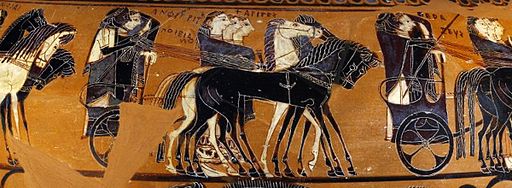
Greek Gods and Goddesses: An Introduction

Mythic Origins of the Greek Gods and Goddesses
#ii: Gaia, the world
#3: Tartarus, the empty abyss below the globe
#4: Nyx, the nighttime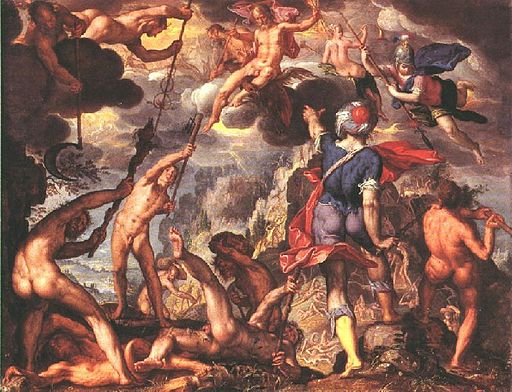
Major Figures of the Pantheon: The Twelve Olympians
Zeus
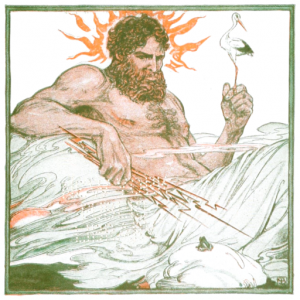
Major Relationships
Major Attributes
Myths
Hera
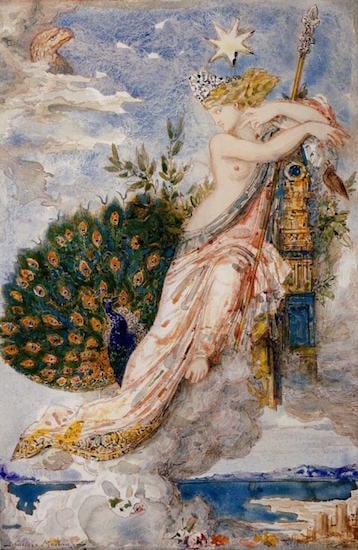
Major Relationships
Major Attributes
Myths
Poseidon
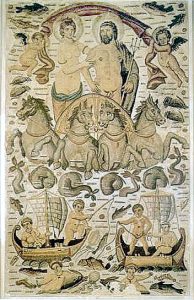
Major Relationships
Major Attributes
Myths
Demeter
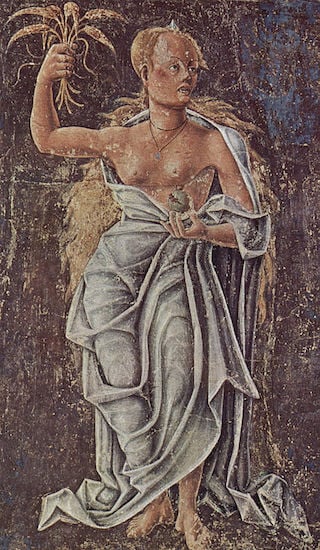
Major Relationships
Major Attributes
Myths
Hades
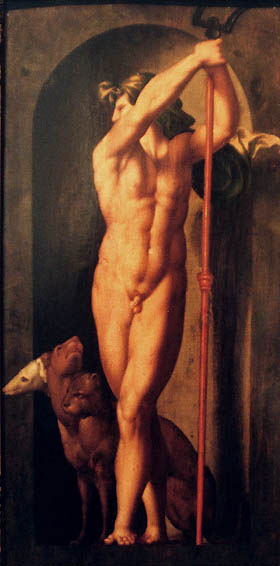
Major Relationships
Major Attributes
Myths
Athena
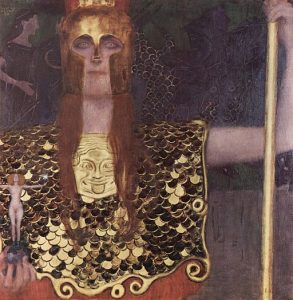
Major Relationships
Major Attributes
Myths
Hephaestus
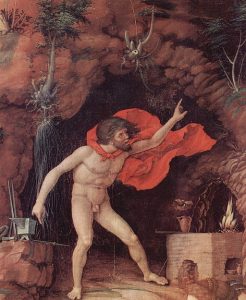
Major Relationships
Major Attributes
Myths
Aphrodite
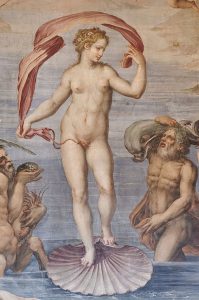
Major Relationships
Major Attributes
Myths
Ares
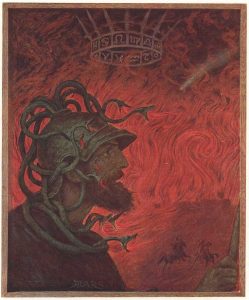
Major Relationships
Major Attributes
Myths
Artemis
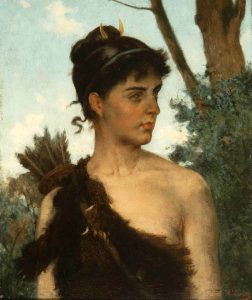
Major Relationships
Major Attributes
Myths
Apollo
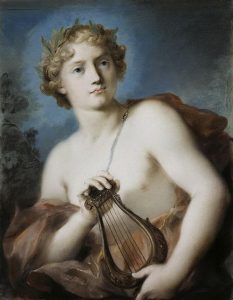
Major Attributes
Myths
Hermes
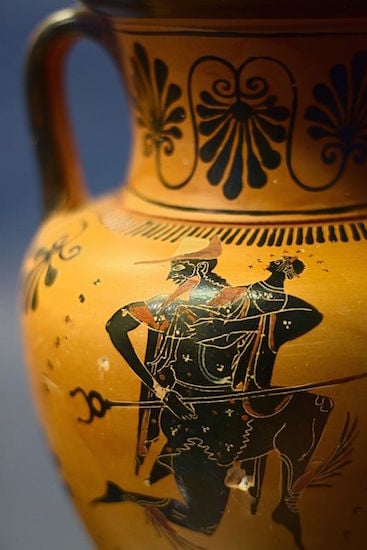
Major Relationships
Major Attributes
Myths
Dionysus
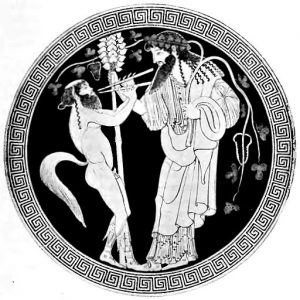
Major Relationships
Major Attributes
Myths
Minor Gods
Atlas—Titan Who Holds Upwards the Sky
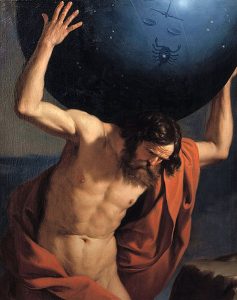
Persephone—Goddess of Spring, Queen of the Underworld
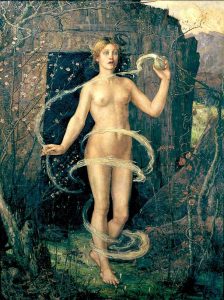
Eos—Goddess of the Dawn
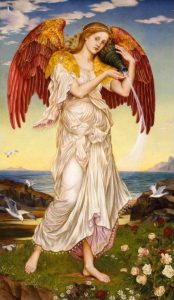
Eros—God of Dearest, Passion, and Fertility
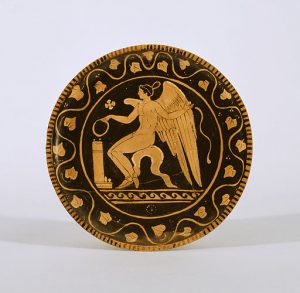
Hecate—Goddess of Witchcraft
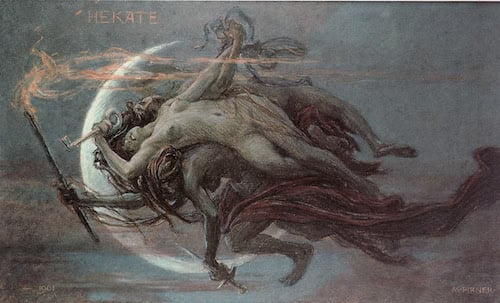
Helios—God of the Sun
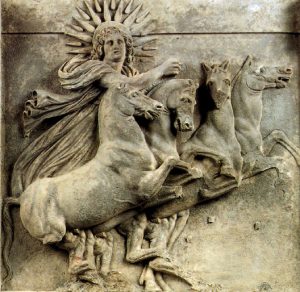
Hestia—Goddess of the Hearth and Domesticity
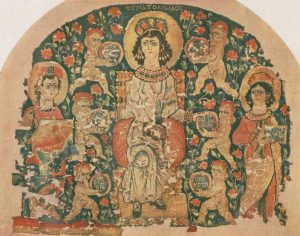
Iris—Goddess of the Rainbow, Messenger of the Gods
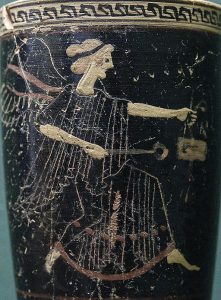
Nike—Goddess of Victory
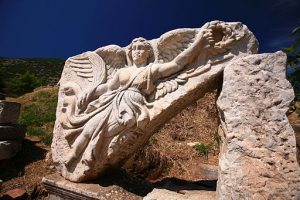
Nyx—Goddess of Nyx
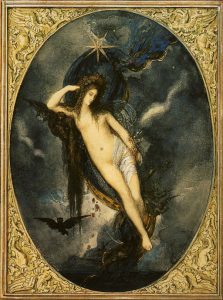
Pan—God of Fertility, Nature, Shepherds, and Goatherds
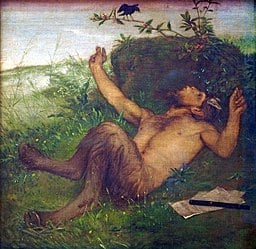
Selene—Goddess of the Moon
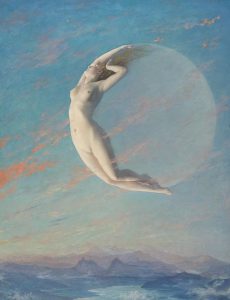
Themis—Goddess of Justice, Wisdom, and Divine Law
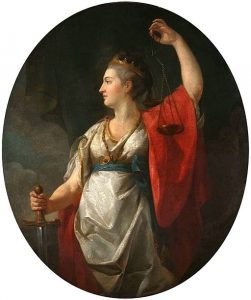
iii Famous Greek Goddess Groups
The Furies—Goddesses of Vengance
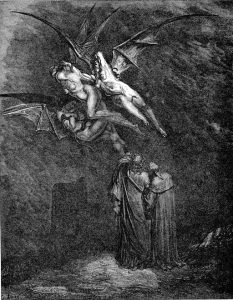
The Muses—Goddesses of Art and Science
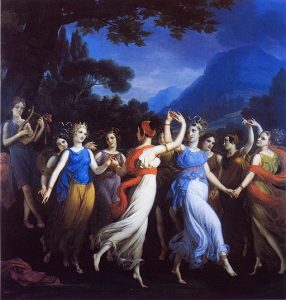
The Fates—Goddesses of Destiny
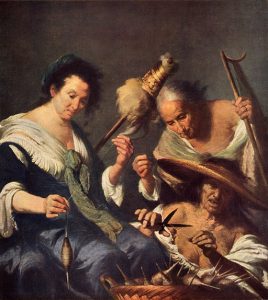
Almost These Goddesses:
Greek Gods Family Tree

The Worship of the Greek Goddesses and Gods
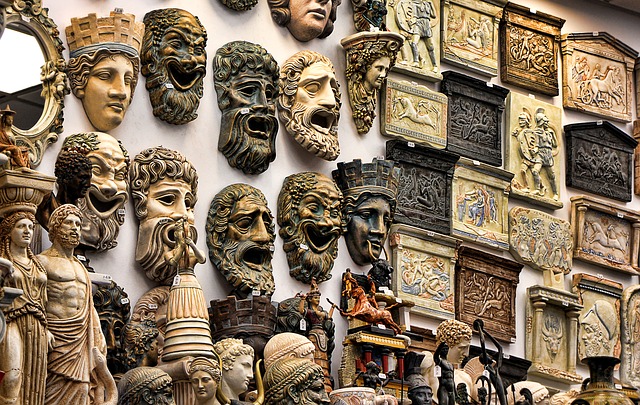
Greek Goddesses and Gods Today
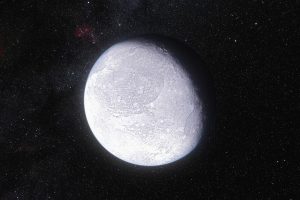
The Greek Gods and Goddesses: Cardinal Points to Remember
What'southward Next?

About the Author
Ellen has extensive teaching mentorship experience and is deeply committed to helping students succeed in all areas of life. She received a BA from Harvard in Folklore and Mythology and is currently pursuing graduate studies at Columbia University.
Source: https://blog.prepscholar.com/greek-gods-goddesses-names-family-tree
Post a Comment for "Family Tree of Gaia and Satan Family Tree of Gaia and Kronos"